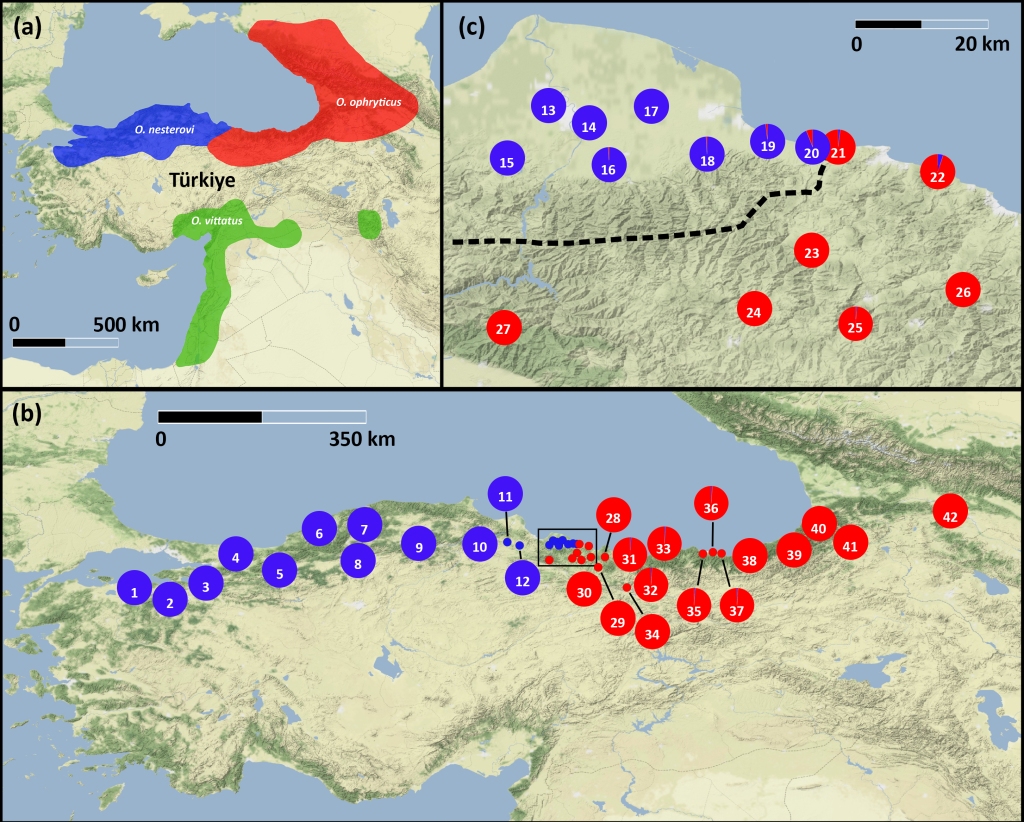Three banded newt species are currently recognized. However, this was not always the case. Previously, my lab has shown that these morphologically similar species are genetically super distinct. That is why we suggested their treatment as distinct species – despite their morphological similarity. The term ‘cryptic species’ is regularly used in such a case.

But is being genetically distinct enough to qualify as a species? If cryptic species meet in nature, it is possible to perform the ultimate test of species status: hybrid zone analysis. Selection against hybrids allows species to persist. Hybrid zone analysis can tell you if natural selection favors purebreds of either species over their genetically mixed offspring.

In a new paper published in Ecology and Evolution, we show that two of the banded newt species meet at a hybrid zone in northern Türkiye. At this hybrid zone, selection against hybrids is evidently very strong. As a consequence, the hybrid zone is extremely narrow. Our study shows that the two banded newts truly are proper species. We have already shown that, with the benefit of hindsight, it is actually possible to distinguish them based on morphological characteristics.
Reference: Kalaentzis, K., Arntzen, J.W. Avcı, A., van den Berg, V., Beukema, W. France, J., Olgun, K., van Riemsdijk, I., Üzüm, N., de Visser, M.C., Wielstra, B. (2023). Hybrid zone analysis confirms cryptic species of banded newt and does not support competitive displacement since secondary contact. Ecology and Evolution 13(9): e10442.
This project has received funding from the European Union’s Horizon 2020 research and innovation programme (under the Marie Skłodowska-Curie grant agreement No. 655487) and the ‘Nederlandse organisatie voor Wetenschappelijk Onderzoek’ (NWO Open Programme 824.14.014)

